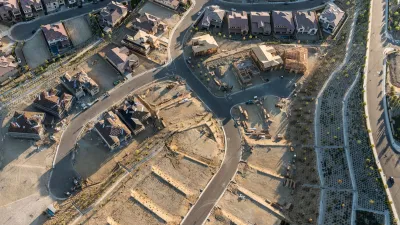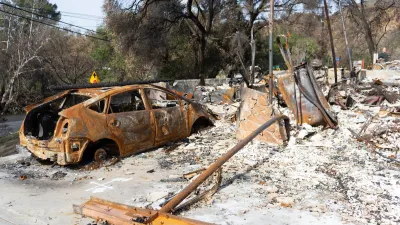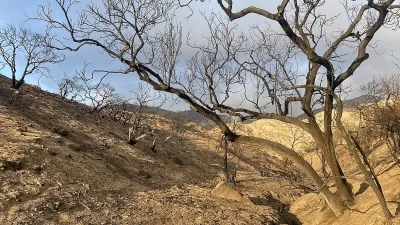Effective wildfire mitigation in California requires a holistic approach that goes beyond large-scale vegetation removal, emphasizing home hardening, defensible space, strategic planning, and reducing human-caused ignitions.

The January 2025 Los Angeles wildfires devastated the region, destroying over 10,000 homes and resulting in more than two dozen fatalities. In response, some have proposed solutions like the "Fix Our Forests Act," which may inadvertently harm California's unique ecosystems without effectively addressing the root causes of such fires. A prevalent misconception is that large-scale vegetation clearing can mitigate wildfire risks; however, experts argue that this approach oversimplifies the complex nature of wildfires in California's diverse ecosystems. Effective solutions require multifaceted, region-specific strategies that consider ecological nuances and emphasize improved urban planning.
California's ecosystems, including mixed conifer forests, oak woodlands, and shrublands, each have distinct fire regimes characterized by variations in frequency, timing, size, and intensity. In Southern California, native shrublands like chaparral and sage scrub are adapted to infrequent, high-intensity fires occurring every 30 to 100 years. Historically, these areas experienced low lightning strike frequencies, resulting in fewer natural ignitions. The plant species in these ecosystems possess adaptations such as fire-induced seed germination and resprouting, enabling rapid recovery after intense fires. However, excessive disturbances, including frequent fires, can negatively impact these ecosystems, underscoring the importance of tailored fire management strategies.
While fuel modification can be beneficial in specific contexts, such as creating defensible space around structures and establishing strategic fuel breaks to aid firefighting efforts, it is not a panacea. During extreme wind events, like those driven by Santa Ana winds, embers can travel significant distances, igniting structures regardless of nearby vegetation management. Therefore, experts advocate for a comprehensive approach to wildfire risk mitigation that includes home hardening, maintaining defensible space, thoughtful community and infrastructure planning, and reducing human-caused ignitions. This holistic strategy aims to enhance community resilience while preserving the ecological integrity of California's diverse landscapes.
FULL STORY: Expert Perspective: Wildland Fuels Management Would Not Have Saved Us from the January 2025 LA Fires

Manufactured Crisis: Losing the Nation’s Largest Source of Unsubsidized Affordable Housing
Manufactured housing communities have long been an affordable housing option for millions of people living in the U.S., but that affordability is disappearing rapidly. How did we get here?

Americans May Be Stuck — But Why?
Americans are moving a lot less than they once did, and that is a problem. While Yoni Applebaum, in his highly-publicized article Stuck, gets the reasons badly wrong, it's still important to ask: why are we moving so much less than before?

Using Old Oil and Gas Wells for Green Energy Storage
Penn State researchers have found that repurposing abandoned oil and gas wells for geothermal-assisted compressed-air energy storage can boost efficiency, reduce environmental risks, and support clean energy and job transitions.

Minneapolis Bans Rent-Setting Software
Four cities have enacted restrictions on algorithmic software that can inflate rent costs.

Oakland to Add 244 New EV Chargers
Oakland plans to launch its new charging network at eight locations by the end of 2025.

Jane Goodall Inspires with Message of Hope, Resilience, and Environmental Action
Speaking in Pasadena, Jane Goodall offered a hopeful and inspirational message, urging global compassion, environmental responsibility, and the power of individual action to shape a better future.
Urban Design for Planners 1: Software Tools
This six-course series explores essential urban design concepts using open source software and equips planners with the tools they need to participate fully in the urban design process.
Planning for Universal Design
Learn the tools for implementing Universal Design in planning regulations.
Heyer Gruel & Associates PA
City of Moreno Valley
Institute for Housing and Urban Development Studies (IHS)
City of Grandview
Harvard GSD Executive Education
Salt Lake City
NYU Wagner Graduate School of Public Service
City of Cambridge, Maryland





























